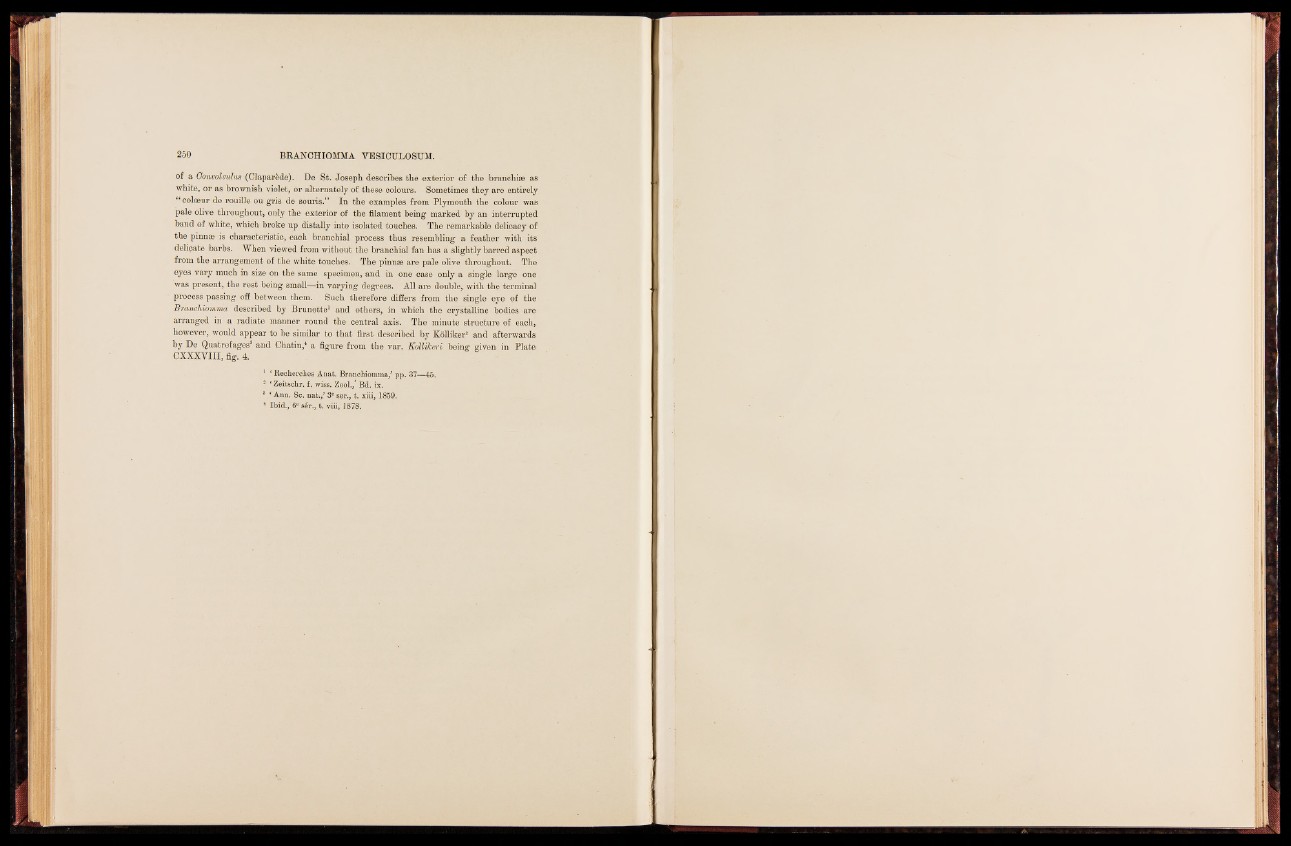
of a Convolvulus (Claparède). De St. Joseph describes the exterior of the branchiae as
white, or as brownish violet, or alternately of these colours. Sometimes they are entirely
“ coloeur de rouille ou gris de souris.” In the examples from Plymouth the colour was
pale olive throughout, only the exterior of the filament being marked by an interrupted
band of white, which broke up distally into isolated touches. The remarkable delicacy of
the pinnæ is characteristic, each branchial process thus resembling a feather with its
deliçate barbs. When viewed from without the branchial fan has a slightly barred aspect
from the arrangement of the white touches. The pinnæ are pale olive throughout. The
eyes vary much in size on the same specimen, and in one case only a single large one
was present, the rest being small—in varying degrees. All are double, with thp terminal
process passing off between them. Such therefore differs from the single eye of the
Branchiomma described by Brunotte1 and others, in which the crystalline bodies are
arranged in a radiate manner round the central axis. The minute structure of each,
however, would appear to be similar to that first described by Kôlliker2 and afterwards
by De Quatrefages8 and Chatin,4 a figure from the var. Kollilc&ri being given in Plate
CXXXVIII, fig. 4.
1 ‘ Recherches Anat. Branchiomma/ pp. 37—45.
3 e Zeifcschr. f. wiss. Zool., Bd. ix.
8 ‘ Ann. Sc. nat./ 3® ser., t. xiii, 1859.
4 Ibid., 6e sér., t. viii, 1878.